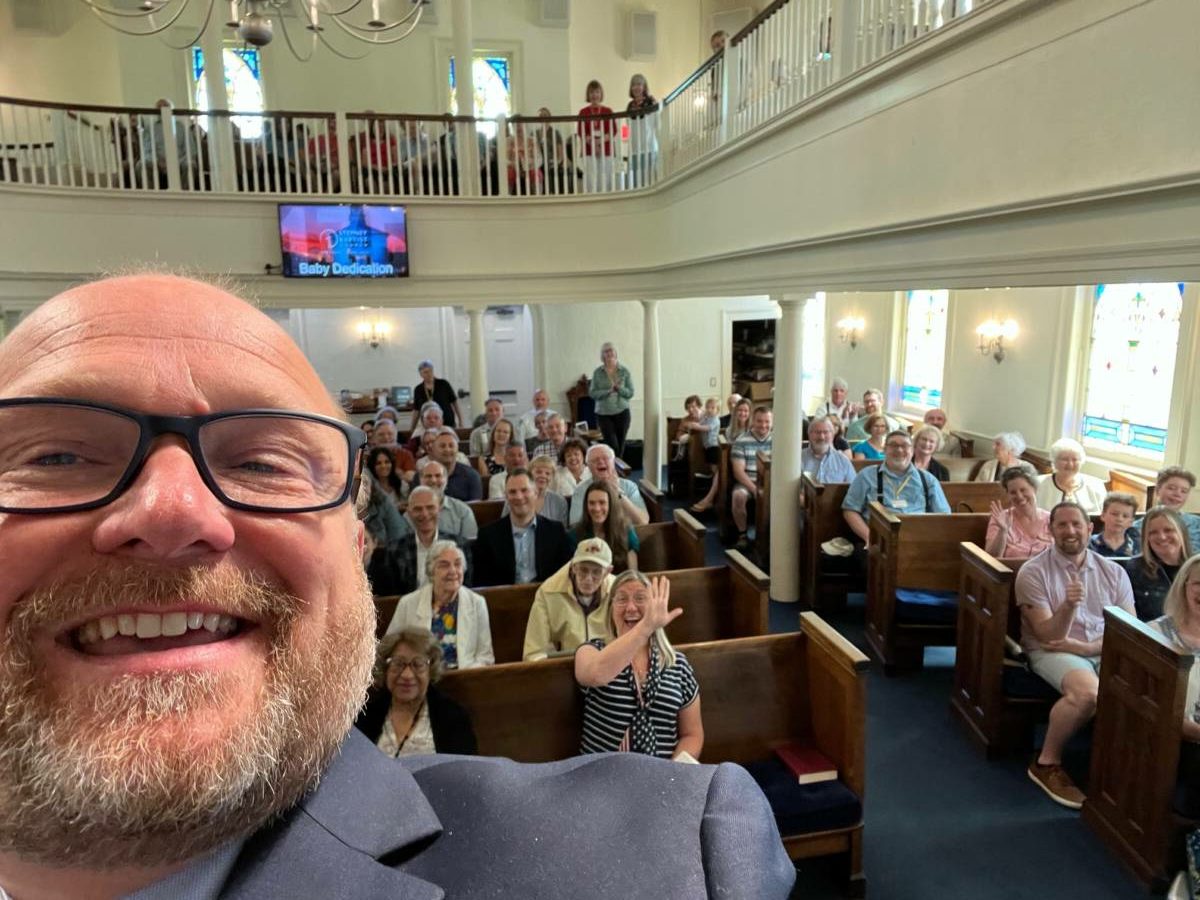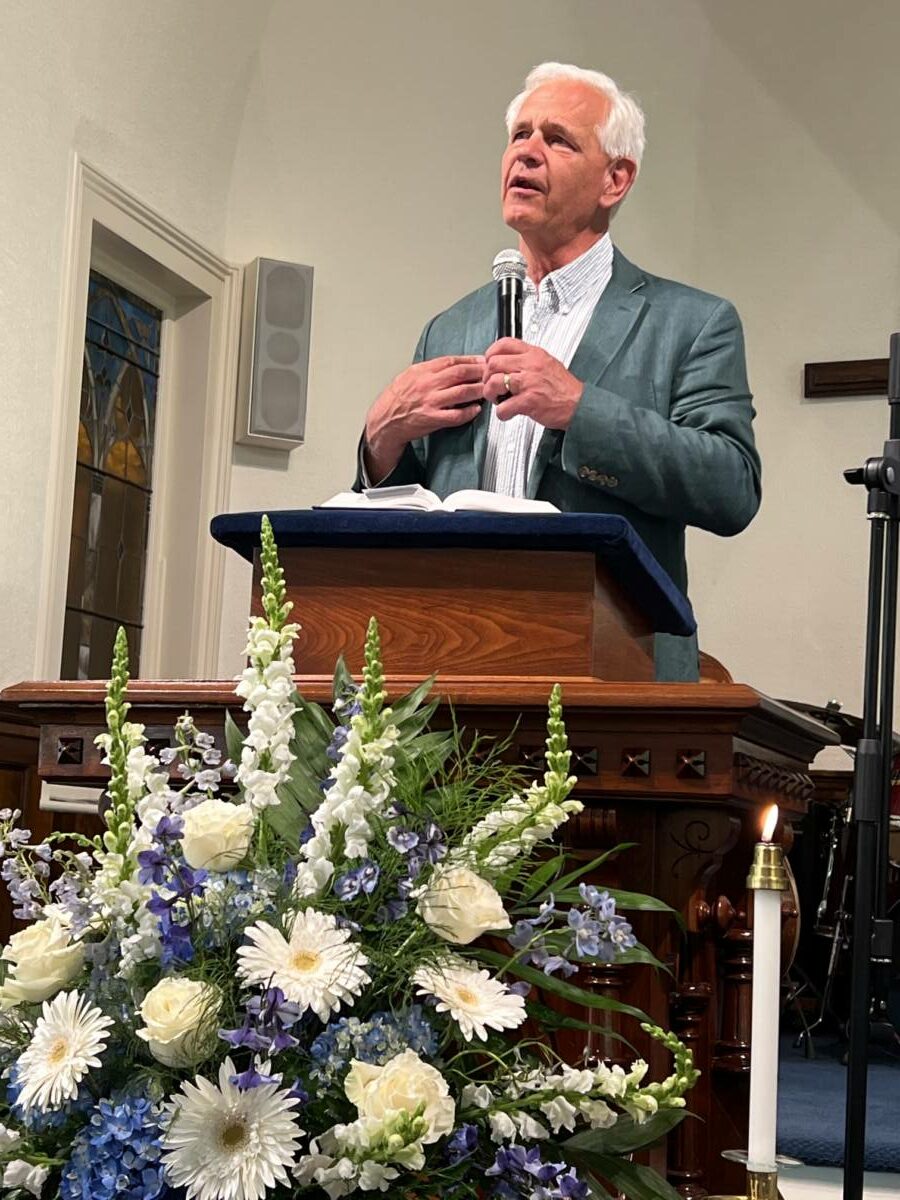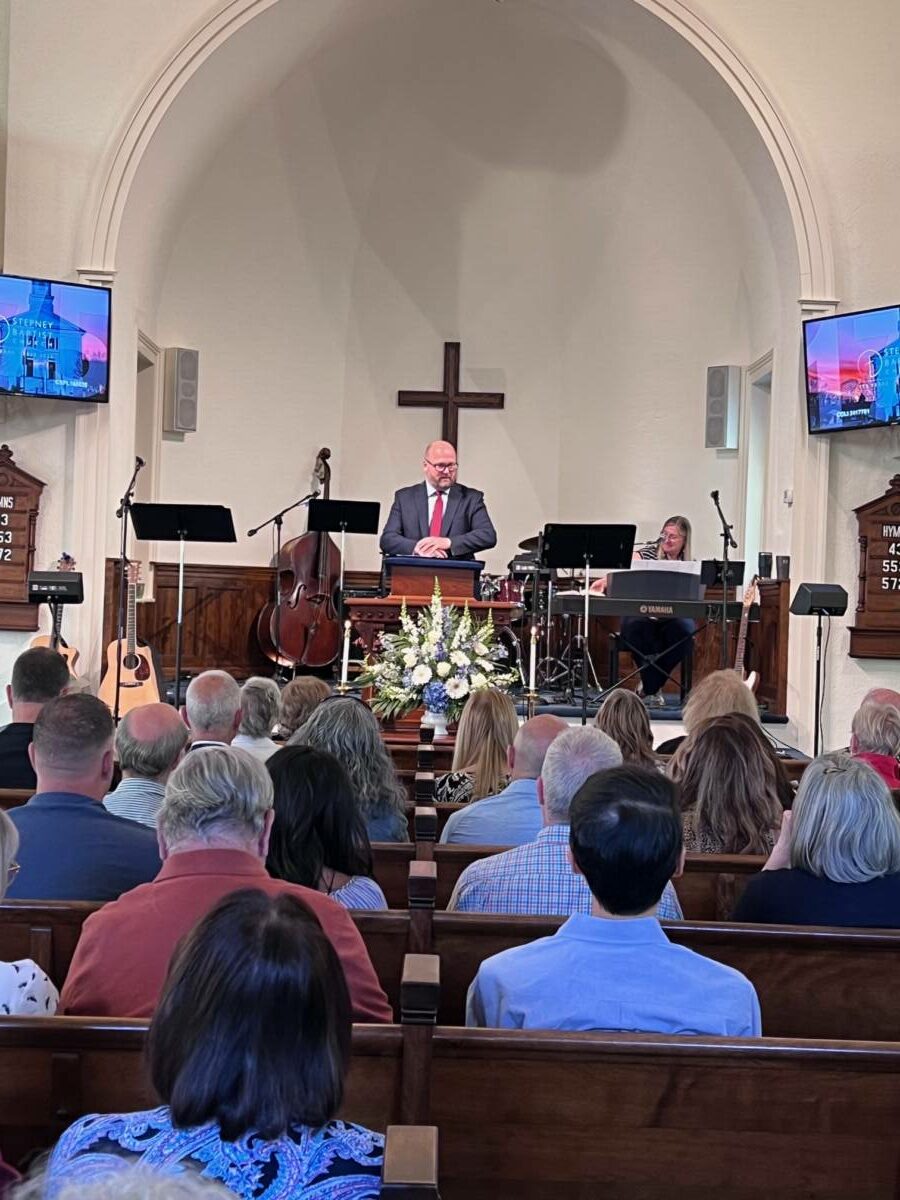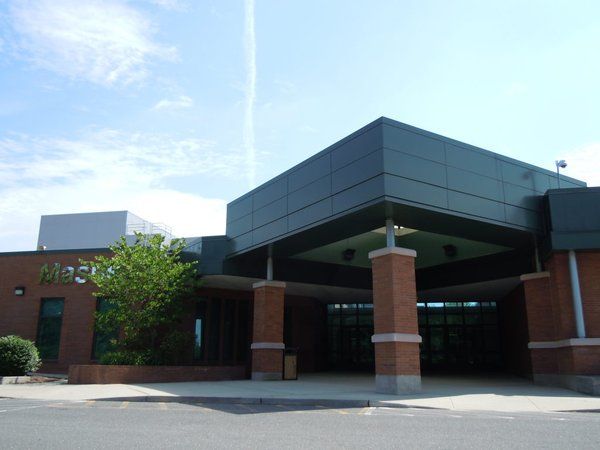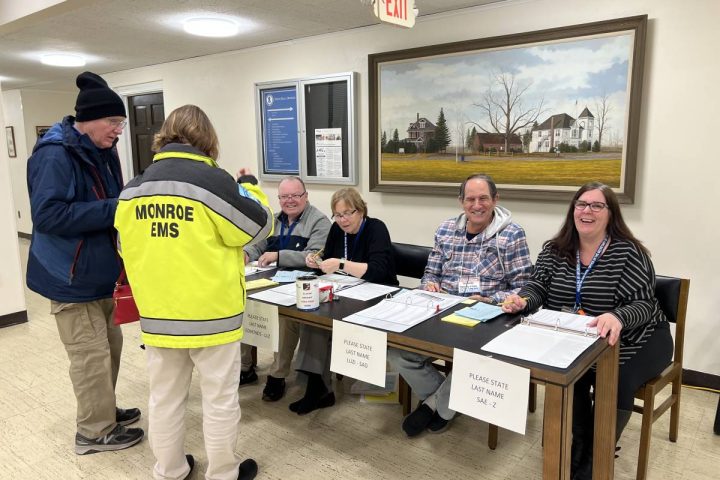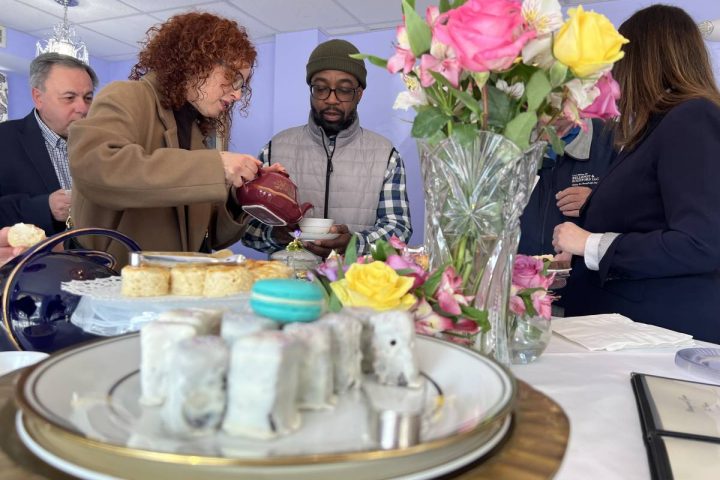Stepney Baptist Church, the towering white wooden building at 423 Main St., has stood at the edge of the green since 1841, when Methodist and Baptist “twin churches” were built there during the Second Great Awakening when millions of souls came to faith in Christ.
Seven years later, 53 members broke away from the mother church in Easton to form the Monroe Baptist Society and Stepney Baptist Church became an independent congregation.
This year, Stepney Baptist Church is celebrating its 175th year anniversary. Its congregation is led by The Rev. Kevin A. Merritt, the church’s 43rd and longest serving pastor.
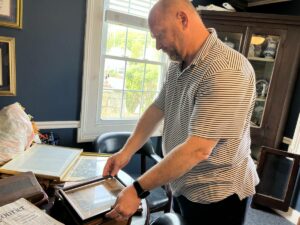
Historical artifacts, old framed photos and yellowing newspaper articles about the church were recently scattered on a table inside Merritt’s office as he researched its history.
“It’s challenging, because there are contradictory narratives, so you have to piece together what you can — what is known and what is lore,” he said.
Merritt has been working closely with Kevin Daly, historian of the Monroe Historical Society.
“Formally meeting and working with Reverend Merritt in search of Stepney Baptist Church’s earliest history has been a most rewarding experience,” Daly said. “I was immediately struck by his enthusiastic nature and genuine compassion for his church and its history.”
“We became fast friends and have openly shared and discussed our historic evidence to reveal the location of the church’s earliest meetinghouse in Lower Stepney,” he said. “I sincerely look forward to working further with Reverend Merritt in the future to perform an archaeological study of the site. What a great way to round out the church’s 175th anniversary year.”
In 1793, land was donated by Samuel Wakelee for a Baptist Meeting House, which was built in Lower Stepney, on Judd Road, at the foot of Hiram hill, opposite the home of Captain John Powell, according to a booklet on the church’s history.
Though records of the late 18th century building are scarce, it is believed some elements were used to build the existing Greek Revival style meeting house in Stepney.
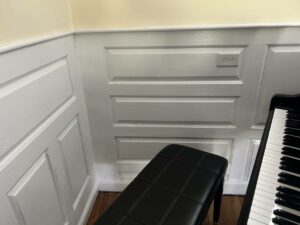
“Legend holds that family pew boxes were repurposed to create wainscotting on the walls of the lower room – now called the Williams Room – of Stepney Baptist Church,” according to the booklet.
“The paneling downstairs was definitely repurposed,” Merritt said, while showing the differences in some of the patterns on the wall.
The church put together a timeline of key dates. Among them, extensive repairs and a new addition to the meeting house were completed in 1885, when the church bell was acquired. After alterations to the steeple were completed, the bronze bell was hoisted up into the belfry, where it called the faithful to worship until it fell after being struck by lightning in 1964.
The bell was placed on a stone monument between the parsonage and the meetinghouse and dedicated to faithful members Charles F. Nichols and Louis W. Fuller.
An electronic bell system was installed in 1973 and operated until 2015.
Stained glass windows were installed in the building in 1903 and the new indoor baptistry was used for the first time. Members were previously baptized in the Pequonnock River behind Stepney Cemetery, according to the historical booklet.
Wood-burning stoves were removed from the sanctuary and an oil-fired furnace was installed in 1947, The sanctuary was completely renovated in 1950 and extensive storm damage to the steeple was repaired.
Stepaway Preschool
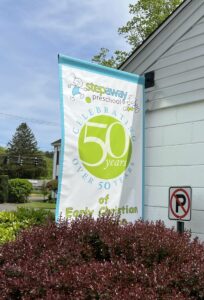
The education building was built for $30,345 in 1960. Among the first to use it was the Mother’s Club of Monroe, which offered the only kindergarten in town at the time. The kindergarten became Stepaway Preschool under the initial direction of Emma D’Ostilio.
A Rally and Dedication Day was held on September 19, 1971 to rename the educational building in loving memory of Irma Nichols, a faithful Sunday school teacher who was struck and killed by an automobile as she returned home from a meeting at church.
In 2000, storm windows were placed outside the stained glass windows, central air conditioning was installed and vinyl siding applied to the entire church building.
Another significant project was a $300,000 renovation of the main sanctuary with all of the money raised by the congregation. It involved leveling out the main floor and the balcony.
“We repurposed 100-year-old maple pews from the UCC Bridgeport building, expanded the altar area, added wainscoting — also from the UCC — and replaced the carpeting and lighting,” Merritt said.
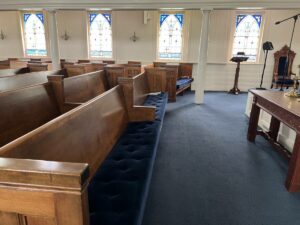
The congregation continues to maintain and upgrade its church. This spring, a steeple project included installing posts for the new rail and post structure and replacing the corner columns.
Other significant milestones in Stepney Baptist’s history were taking over the charter for Royal Family Kids Camp in 2019, running a week-long summer camp at the ABC Camp Wightman and taking part in a monthly mentoring program for foster children ages 6-12 in the Bridgeport DCF.
On May 28, the church had a celebratory service for its 175th anniversary and a picnic with live music, food and games. The Rev. Jim Pocock and his wife Beth, who served at Stepney Baptist Church between 1981-1992, were special guests.
Merritt said he is grateful to the Pococks and to everyone who participated in the life of the church over the past decades.
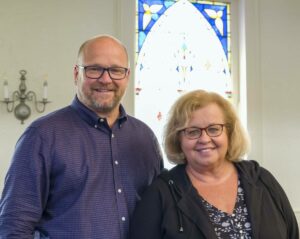
Merritt became pastor of Stepney Baptist Church after The Rev. George Britt, who served from 1999 to 2006. He and his wife Liz have a grown daughter named Emily.
“Preparing for this special anniversary in the life of Stepney Baptist has reminded me of my honor to serve this community as its 43rd pastor,” Merritt said.
In addition to Kevin Daly, Merritt expressed his gratitude to David Webb, Monroe Historical Society President Karen Cardi, the late town historian Ed Coffey, and the late church historian Newton Williams, whose contributions helped him to compile the history of Stepney Baptist Church.
“Newt’s predecessor, Carlos Stillson, also deserves a posthumous shoutout for his handwritten 90th anniversary celebration document in 1938,” Merritt said.


